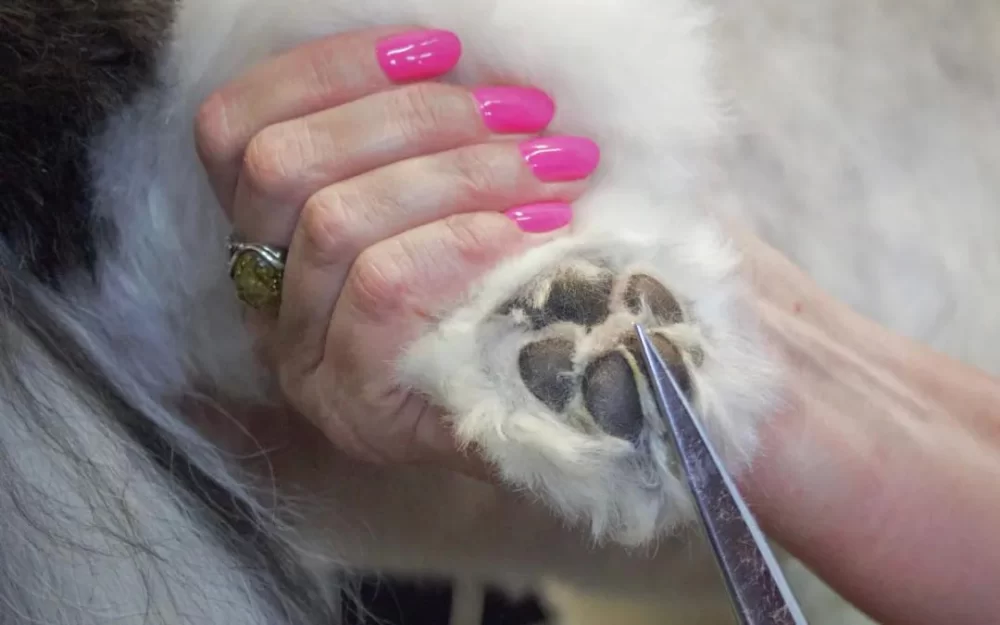Essential Tips for Caring for Your Pet’s Paws and Nails
As a devoted pet owner, I’ve come to realize how crucial it is to maintain the health of our furry friends’ paws and nails. We often focus on their coats or feeding schedules, but our pets' paws deserve just as much attention. If you’re anything like me, you want to ensure that your pet stays happy, healthy, and comfortable— and that begins with their paws. Whether you have a playful puppy, an energetic dog, or even a senior pet, paw care is essential throughout all stages of their life. Let me take you through some simple yet effective steps to properly care for your pet’s paws and nails.
1. Regular Paw Inspection
One of the best ways to ensure your pet’s paws are in top shape is to regularly inspect them. Just like we take a look at our feet after a long day, you should check your pet’s paws after every walk or outdoor adventure. Look for any foreign objects like stones, glass, or debris lodged between the pads. A small stick can lead to an infection if not removed promptly. You’d be surprised by how often pets step on things they shouldn’t, and it’s up to us to notice and act.
Moreover, don’t forget to check for signs of wear, cracks, or sores. If your dog is a frequent runner or takes on tough terrain, their pads can get worn down, causing them to become rough or sore. This is something you need to address early on to avoid any discomfort.
2. Keeping Paws Clean and Dry
Paws can get dirty, especially after walks in the rain or after playing in the dirt. Cleaning your pet’s paws is an important step to prevent infections. I found that using a gentle paw wipe or simply washing my dog’s paws with warm water does wonders. Don’t forget to dry their paws thoroughly afterward! Damp paws are an invitation for bacteria and fungi to grow, leading to uncomfortable paw conditions like fungal infections or even paw pad irritations.
In my experience, a clean, dry paw makes all the difference in keeping your pet’s feet happy. If you’re out in wet or muddy conditions, try keeping some pet-safe wipes with you or rinse their paws once you’re home. It takes just a few minutes and prevents much larger issues down the road.
3. Nail Trimming: Essential for Comfort
Let’s talk about nail care— something that many pet owners dread. Overgrown nails can cause a whole range of issues for pets, from painful walking to joint stress. I used to struggle with trimming my dog’s nails until I realized just how important it was for his overall health. If nails are allowed to grow too long, they can curl into the paw pads, causing pain and potentially leading to infections.
To start, it’s important to use the right tools— a pair of high-quality pet nail clippers. When trimming, be mindful of the quick—the pinkish area inside the nail that contains blood vessels. Cutting this can be painful and lead to bleeding. Start by trimming small portions of the nail, and if your pet is particularly nervous, consider asking your vet or groomer for help. Some pets, especially older ones, can become sensitive or anxious during nail trimming sessions.
4. Moisturizing Your Pet’s Paws
Just like we apply lotion to our hands and feet, your pet’s paws benefit from a good moisturizer. Cold weather, dry climates, or excessive running on hard surfaces can cause their pads to crack and become dry. I’ve personally found that applying a pet-safe paw balm or natural coconut oil helps keep their pads soft and hydrated. This is especially important for dogs who spend a lot of time outdoors or on rough terrain.
While moisturizing is important, be careful not to overdo it. Applying too much can cause dirt to stick to the pads, which can lead to additional discomfort. I recommend applying a small amount after cleaning their paws and ensuring it’s absorbed fully before letting your pet walk on different surfaces.
5. Paw Protection During Extreme Weather
Our pets are exposed to the elements, and as a result, their paws endure a lot of wear and tear. During the hot summer months, pavement and asphalt can become scalding hot, potentially burning your pet’s sensitive paws. On the other hand, the cold winter months bring snow, ice, and salt, which can all be harsh on their paws.
One of the most effective ways to protect your pet’s paws is by using protective booties. I didn’t think my dog would tolerate wearing them, but after a few tries, he got used to them, and now we both enjoy worry-free walks in any season. If booties aren’t an option, applying a paw wax or balm before heading out can offer some protection against both heat and cold. Just make sure to clean the paws afterward to remove any salt or ice buildup.
6. Seek Professional Help When Needed
Despite all of our best efforts, sometimes our pets need extra care. If your pet is experiencing persistent discomfort, limping, or showing signs of paw injury, it’s important to consult with a veterinarian. They can provide specialized care and help with any underlying issues that could be affecting your pet’s paws, such as infections or arthritis. I’ve had to take my dog to the vet on a few occasions when his paw pads showed signs of infection, and I can’t emphasize enough how critical it is to seek professional advice when needed.
Additionally, if you’re unsure about how to trim your pet’s nails or take proper care of their paws, don’t hesitate to ask for guidance from a groomer or veterinarian. These professionals can demonstrate the proper techniques and give you tips tailored to your pet’s needs.
7. Why Paw Care Matters
Our pets’ paws are their foundation. Without healthy paws, they can’t run, jump, or play the way they love to. Proper paw care is an investment in your pet’s comfort and long-term well-being. Over the years, I’ve learned that taking a few minutes each day or week to care for my pet’s paws can prevent a lot of discomfort and serious health issues.
By incorporating these simple practices into your routine, you’ll not only improve your pet’s health but also show them how much you care. After all, healthy paws are happy paws, and when your pet is comfortable, you can enjoy many more adventures together. Just remember— taking proactive steps today will help ensure that your pet remains mobile and pain-free tomorrow.












